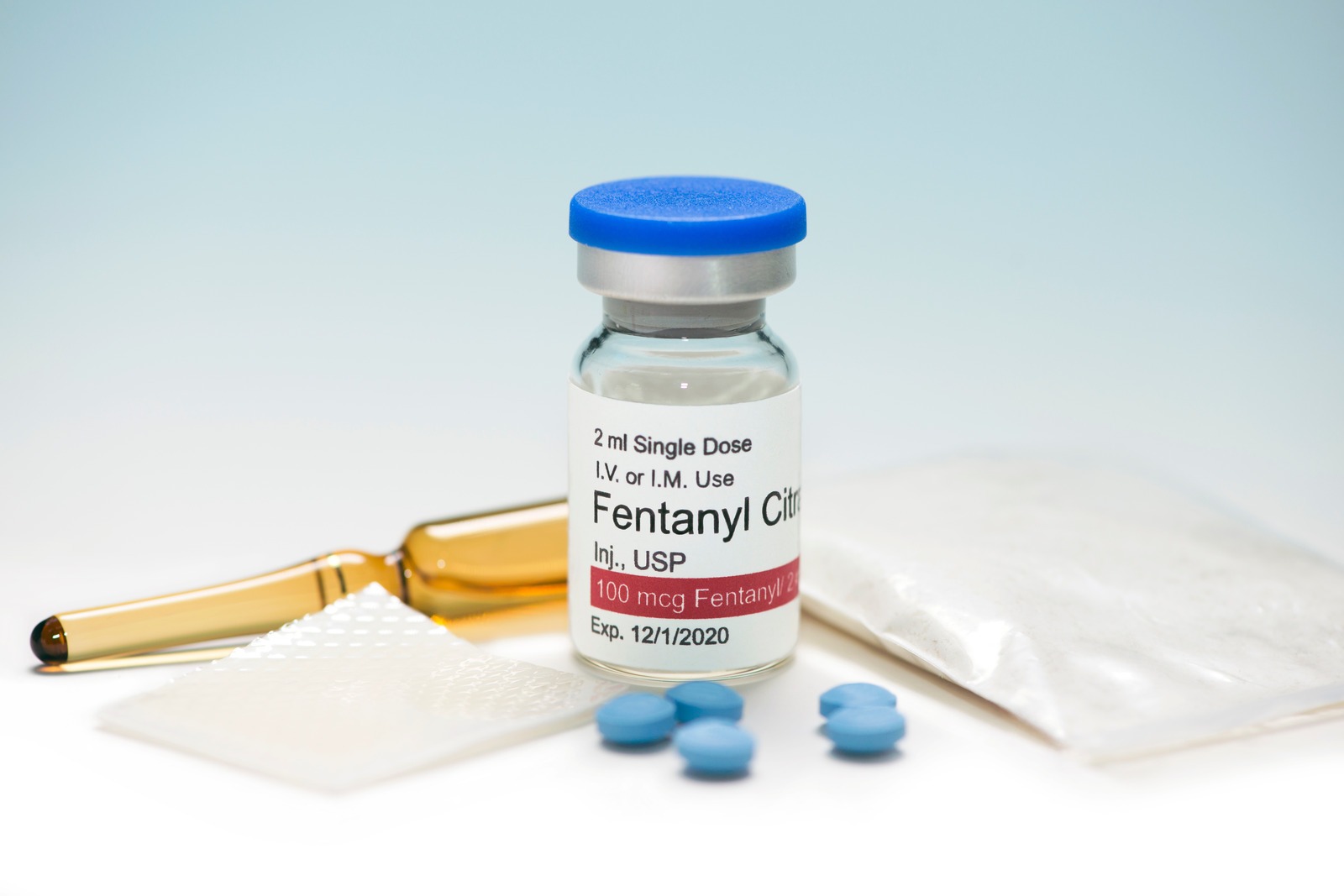How Long Does Fentanyl Stay in Your System? Half-Life and Timelines of Fentanyl

- The half-life of fentanyl refers to the time it takes for the concentration of the drug in the bloodstream to decrease by half.
- Various individual factors significantly influence the detection time of fentanyl in the body, impacting its metabolism and elimination.
- When seeking to expedite the clearance of fentanyl from the system, focus is often placed on strategies that promote natural detoxification processes.
- Healthcare providers play a crucial role in managing fentanyl use, providing personalized recommendations based on individual health needs and circumstances.
How Long Does Fentanyl Stay In Your System?
Fentanyl, a synthetic opioid, is known for its potency and use in managing severe pain.[1] Understanding how long fentanyl stays in the system is crucial for various reasons. Whether for medical management, drug testing, or avoiding potential overdose risks, comprehensive information on fentanyl detection aids in informed decision-making and keeping yourself safe.
Fentanyl Metabolism and Half-Life
Fentanyl gets processed in your liver, mainly by a system called cytochrome P450, especially one part called CYP3A4. This process turns fentanyl into different substances like norfentanyl and hydroxylated metabolites.
These substances are mostly removed from the body through urine. How fast this happens can differ for each person because of factors like how well the liver works, genetic differences, and whether you’re taking other medications that affect how these enzymes work.
The half-life of fentanyl refers to the time it takes for the concentration of the drug in the bloodstream to decrease by half. Fentanyl’s half-life typically ranges from 3 to 7 hours, but it can be prolonged in individuals with impaired liver function or those using extended-release formulations.[2] Understanding the half-life of fentanyl is essential for healthcare providers when determining dosing regimens and monitoring for potential drug interactions or accumulation.
Factors Influencing Fentanyl Detection Time
Various individual factors significantly influence the detection time of fentanyl in the body, impacting its metabolism and elimination.[3]
Firstly, individual variations in metabolism play a crucial role in determining how quickly the body processes and clears fentanyl. Factors such as liver function, age, genetics, and concurrent use of medications can affect the rate at which fentanyl is metabolized and eliminated from the system.
From there, the dosage and frequency of fentanyl use can impact its detection time as well. Higher doses and more frequent use may lead to accumulation of the drug in the body, prolonging its detection window. Conversely, lower doses or infrequent use may result in shorter detection times.
Furthermore, underlying health conditions and metabolism variations can influence the metabolism and elimination of fentanyl. Individuals with impaired liver or kidney function may experience delayed clearance of the drug, prolonging its detection time. Similarly, genetic variations in drug-metabolizing enzymes can affect fentanyl metabolism, leading to differences in detection times among individuals.
A comprehensive understanding of these factors is essential for accurately assessing fentanyl detection time and interpreting drug test results. Healthcare providers should consider individual circumstances when evaluating fentanyl use and its potential implications for drug testing and monitoring.
Detection Windows for Different Testing Methods
Fentanyl in Urine
Urine tests can detect fentanyl for up to 1-4 days after last use, depending on various factors such as dosage, frequency of use, and individual metabolism.[4] Factors influencing urine test results include hydration levels, urine pH, and the testing method’s sensitivity.
Blood Tests
Fentanyl can typically be detected in the bloodstream for up to 72 hours after use.[5] However, this detection window may vary based on dosage, frequency of use, and individual metabolism. Higher doses and more frequent use may lead to prolonged detection times in blood tests.
Hair Follicle Testing
Hair tests offer an extended detection window for fentanyl compared to urine and blood tests, typically spanning up to 90 days.[6]However, misconceptions surrounding hair follicle testing, such as the belief that hair color or treatments can affect results, should be addressed. The presence of fentanyl in hair can provide a more comprehensive picture of past drug use but may not necessarily indicate recent use.
Understanding the Half-Life of Fentanyl
The half-life of a drug, including fentanyl, refers to the time it takes for half of the drug to be metabolized and eliminated from the body. In the case of fentanyl, its half-life typically ranges from 2 to 4 hours, although this can vary based on individual factors such as metabolism and dosage.
The concept of half-life is crucial in determining the duration of fentanyl’s effects and its presence in the system. For example, approximately 50% of the drug is eliminated after one half-life, and 75% is eliminated after two half-lives. Therefore, the drug’s effects gradually decrease over time as it is metabolized and cleared from the body.
Considering the half-life of fentanyl is essential in drug testing and interpretation. Understanding the drug’s half-life helps healthcare providers determine the optimal timing for drug testing to detect fentanyl use accurately. Additionally, knowledge of half-life informs healthcare professionals about the duration of fentanyl’s effects and potential risks associated with its prolonged presence in the system. Healthcare providers can make informed decisions regarding patient care and treatment plans by considering half-life in drug testing and interpretation.
Individualized Responses to Fentanyl
Fentanyl, like many medications, elicits varied responses among individuals due to inherent differences in metabolism, tolerance, and overall health. Recognizing these individualized responses is crucial for ensuring effective treatment and minimizing potential risks associated with fentanyl use.[7]
Personalized testing and monitoring play a pivotal role in tailoring fentanyl therapy to individual needs. Healthcare providers must consider factors such as age, weight, underlying health conditions, and concurrent medications when prescribing fentanyl and determining appropriate dosages. Regular monitoring of fentanyl levels and patient response allows for adjustments in treatment plans to optimize therapeutic outcomes while minimizing adverse effects.
Real-world scenarios and patient testimonials provide valuable insights into the diverse responses to fentanyl. Some individuals may experience robust pain relief with minimal side effects, while others may struggle with intolerable side effects or inadequate pain control. By incorporating patient experiences into clinical decision-making, healthcare providers can better understand and address the individualized needs of patients receiving fentanyl therapy.
Detoxification and Fentanyl Clearance
When seeking to expedite the clearance of fentanyl from the system, focus is often placed on strategies that promote natural detoxification processes. Adequate hydration plays a crucial role in supporting kidney function, facilitating the elimination of fentanyl and its metabolites through urine. Maintaining a healthy lifestyle, including regular exercise and a balanced diet rich in fruits, vegetables, and fiber, can also aid in detoxification by promoting optimal liver function and metabolic processes.
While detox products and home remedies are widely marketed as quick fixes for eliminating drugs from the system, their efficacy in expediting fentanyl clearance is limited and often unsubstantiated.[8] These products may fail to deliver the promised results and pose potential risks to health and safety. Moreover, relying solely on detox products or home remedies may divert attention from evidence-based approaches to detoxification and harm reduction.
Ultimately, the most effective approach to detoxification and fentanyl clearance involves prioritizing hydration and healthy lifestyle choices while avoiding reliance on unproven detox products or remedies. Consulting with healthcare professionals can provide personalized guidance and support in navigating detoxification processes and ensuring safe and effective clearance of fentanyl from the system.
Treatment Options for Fentanyl Abuse and Opioid Addiction
For individuals using fentanyl, seeking medical advice from healthcare professionals is critical for accurate information and guidance. Healthcare providers play a crucial role in managing fentanyl use, providing personalized recommendations based on individual health needs and circumstances.
Healthcare professionals can offer support and resources for individuals looking to reduce or cease fentanyl consumption. Through comprehensive assessments, they can develop tailored treatment plans that may include medication-assisted therapy, counseling, and support services to address both physical and psychological aspects of fentanyl dependence, withdrawal symptoms, and addiction.
By partnering with healthcare professionals, individuals using fentanyl can access the support and guidance needed to navigate their journey toward safer and healthier choices. Whether seeking information, assistance with managing fentanyl use, or cessation support, healthcare professionals are valuable allies in promoting well-being and recovery.
Implications for Treatment and Rehabilitation
Fentanyl detection plays a critical role in addiction treatment by providing valuable information for tailored interventions and monitoring progress. Through drug testing, healthcare professionals can assess the extent of fentanyl use, guide treatment decisions, and track changes in substance use patterns over time. This information enables the development of personalized treatment plans that address the specific needs and challenges of individuals struggling with fentanyl addiction.
Moreover, it is essential to address underlying issues contributing to fentanyl use during addiction treatment. Beyond addressing the physical aspects of addiction, such as detoxification and withdrawal management, comprehensive treatment approaches recognize and target the root causes of substance abuse. This may involve addressing co-occurring mental health disorders, trauma, social or environmental stressors, and other factors that contribute to addictive behaviors.
Fortunately, numerous resources and programs are available for individuals seeking help with fentanyl addiction.[9] These may include outpatient or residential treatment programs, counseling and therapy services, support groups, and medication-assisted treatment options. By accessing these resources and engaging in comprehensive treatment and rehabilitation efforts, individuals can embark on recovery and reclaim control over their lives.
Stay Safe and Empower Yourself With Knowledge
In conclusion, understanding how long fentanyl stays in the system is crucial for various aspects of healthcare and well-being. Fentanyl’s detection time varies depending on factors such as metabolism, dosage, and frequency of use. It’s essential to make informed decisions regarding fentanyl use, taking into account individual factors and potential risks associated with its presence in the system.
Seeking professional advice is paramount for accurate information and guidance on fentanyl use, addiction treatment, and rehabilitation. Healthcare professionals can provide personalized recommendations tailored to individual needs, ensuring safe and effective management of fentanyl-related concerns.
By prioritizing informed decision-making and seeking professional advice, individuals can navigate fentanyl use and its implications with greater confidence and awareness, ultimately promoting better health outcomes and overall well-being.
Frequently Asked Questions
Are you or a loved one struggling with Fentanyl use?

